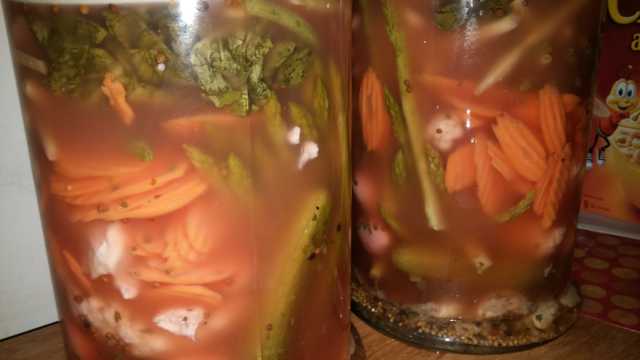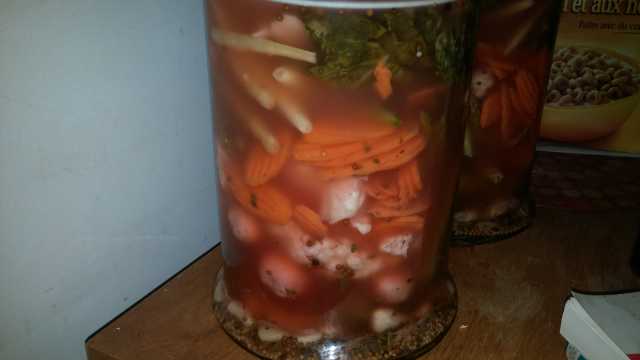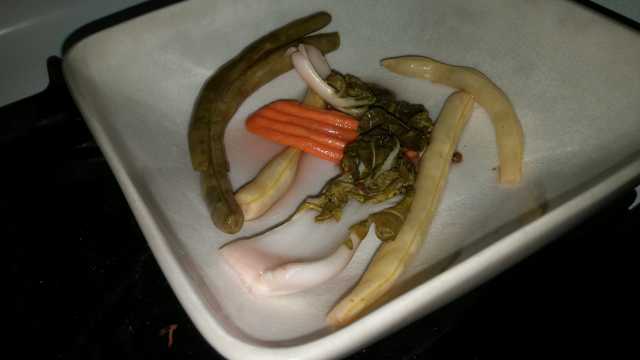Foodies,
This insanely hot summer has now spread into what should be Fall with 28 degrees Celsius days at well past the halfway mark in September when the high should be about half of that and sweaters and leather jackets should be abounding by now.
This ridiculously good weather has allowed me to do yet another full batch of fermented pickles with all local Ontario produce. There are a number of changes to this batch from the last which I will walk everyone through below.
While I was overall quite happy with the last batch, there were some changes I wanted to make. The pickled celery had a very unappetizing texture and were hit and miss as to whether they turned out crisp and fresh or soft and wilted. Some of the dill cucumbers didn’t come out great either. And there were some vegetables I really wanted to try pickling that I hadn’t thought of before.

Once again, I’m using two large glass 2 gallon crocks as my fermentation vessels. For this batch of vegetables, I included the old standbys: garlic, baby dill cucumbers, radishes, bok choy, cauliflower heads and carrots. However, I omitted celery hearts and substituted in green beans, wax beans and green asparagus tips. This would turn out to be the best decision I’ve ever made in my brief veggie fermentation history.
Process starts the same. 3 Tbsp of pickling spices at the bottom of each crock. Throw in the garlic – the only one of all the vegetables to act as both pickle and flavoring aromatic – and then throw in all the rest of the vegetables.
The pickling brine remains the same formula: 1 Tbsp of salt to every 4 cups of water or 1/2 cup of salt for every gallon for you traitorous Yankees still using the Imperial measuring system. However, for this batch, I did something very different. Last time, I used half of my leftover brine and split it between two crocks which came one quarter of the way up each crock and then filled them with fresh brine. This time, I used ALL of the leftover brine as I really didn’t want to waste all that precious lactic acid bacteria by throwing it down the drain. This resulted in the crocks being 3/4s full of liquid right at the start before even adding anything else. Then I topped them both off with fresh brine before weighing down with plates and weights.
Now this is interesting in that I am sacrificing a great deal of freshness by reusing the brine. On the other hand, that leftover brine has been well preserved in the fridge this entire time and is already bursting with lactic acid bacteria and flavor from the previously dissolved salt, pickling spices, hot Thai chili peppers and vegetables from the last batch which have all permeated the liquid via osmosis. In fact, I deliberately omitted the fresh Thai peppers I used in the last two batches because of this.

The result is easily the fastest fermentation I have ever had with such a large batch of vegetables. The last two batches took two full weeks to fully ferment. This batch took an unbelievably fast FIVE DAYS! Again, bear in mind the liquid was already full of dormant lactic acid bacteria that reactivated upon warming up.
I gather partially due to the really quick fermentation, these pickles are super crisp as well. They’re all pretty tasty, of course, but the absolute best of the bunch are the asparagus spears and the green and wax beans. Had I known these would turn out so good I would’ve put them in the first two batches. As it is, they are now going into every future batch. Really firm and bright in color as you can see in the last photo.
So though I was a bit concerned about reusing the brine, when you think about it I have essentially created a fermentation solera y criadera for pickles by topping it off with fresh brine. I will likely continue this process with the next batch. This one is likely to last me through Xmas.
